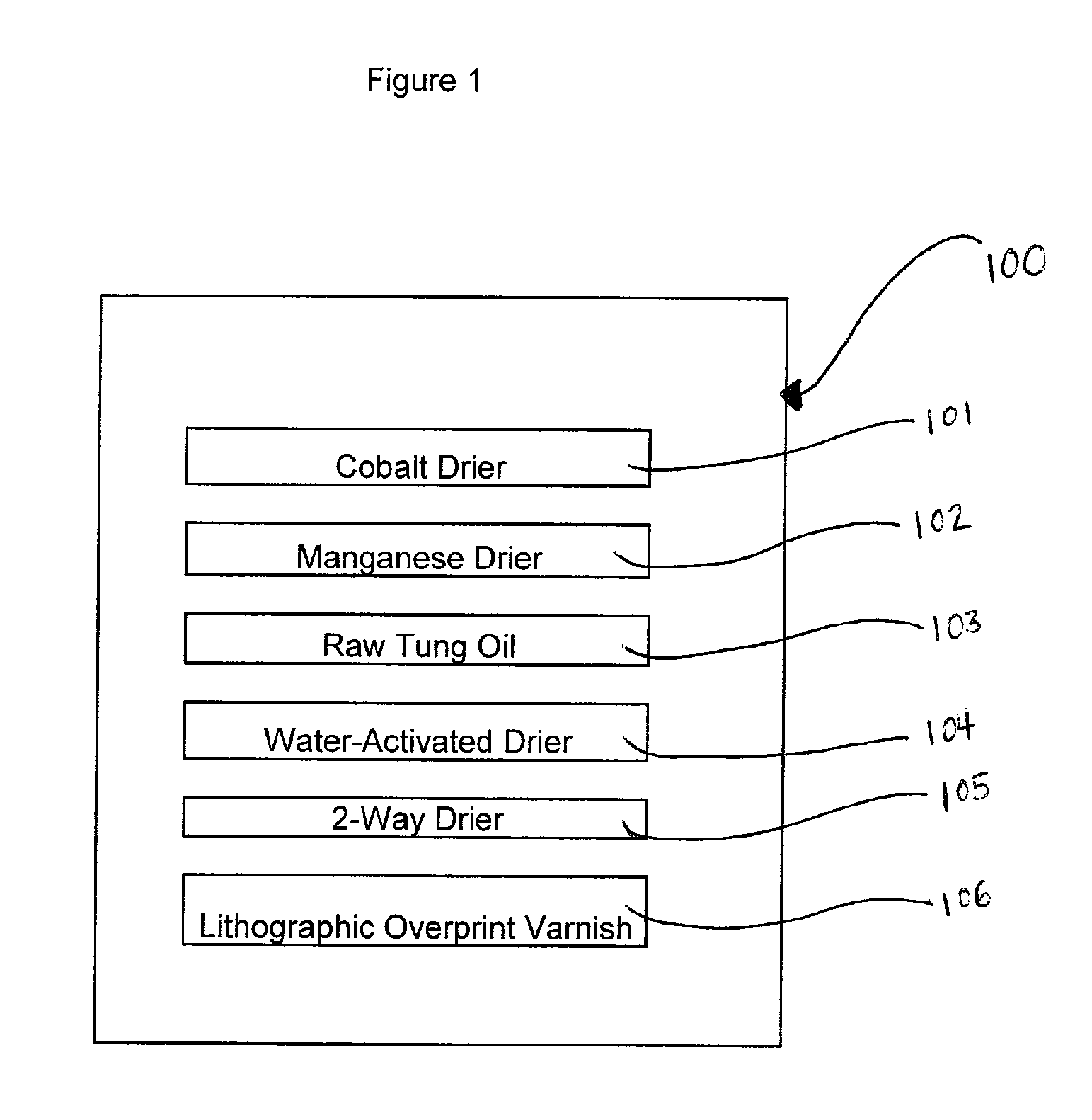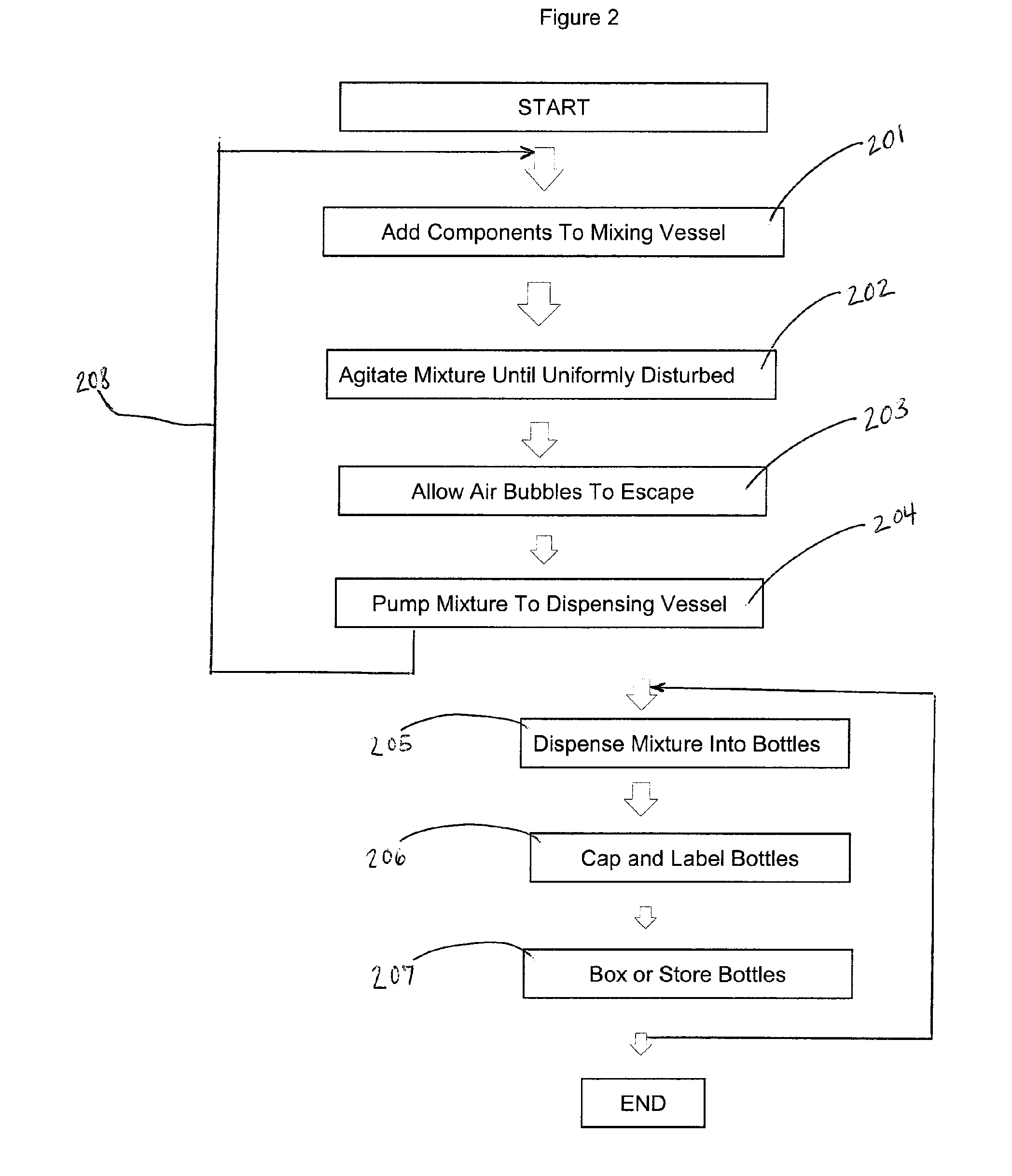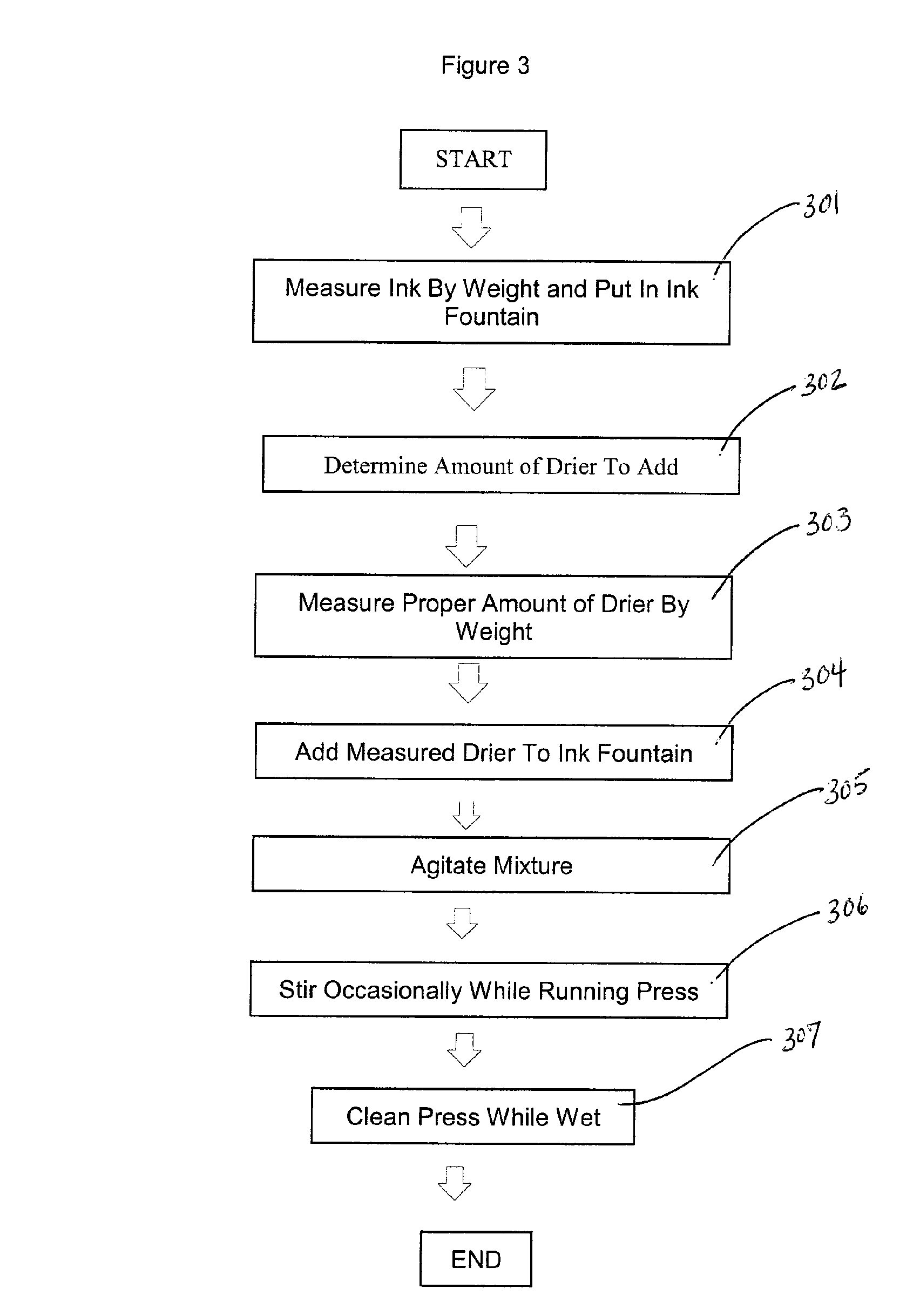Drying enhancement additive and method of using same
a technology of enhancement additive and additive, which is applied in the direction of chemistry apparatus and processes, inks, coatings, etc., can solve the problems of increased explosion probability, increased flashpoint, and increased chance of explosion and other undesirable properties of hardened materials, so as to improve drying characteristics, improve drying characteristics, and improve drying characteristics
- Summary
- Abstract
- Description
- Claims
- Application Information
AI Technical Summary
Benefits of technology
Problems solved by technology
Method used
Image
Examples
Embodiment Construction
[0053] An ink drying agent according to a preferred embodiment of the invention is shown generally in FIG. 1 at reference numeral 100. FIG. 1 shows the ingredients that are combined to form the ink drying agent 100. One component is cobalt drier 101, a paste comprising chelated cobalt in an oil solvent. The cobalt drier 101 is present in the ink drying agent 100 at a ratio of 1 part by weight. The cobalt chelates used in cobalt driers may include carboxylates chelated to oxidized cobalt. Examples of cobalt chelated by carboxylates include cobalt tallate, cobalt acetate, and cobalt decanoate. The cobalt drier 101 is a drier composition having more than 6% cobalt by weight, and less than 14% cobalt by weight. The cobalt drier 101 is preferably a 12% cobalt drier. That is, a drier composition comprised of 12% cobalt by weight. Particularly beneficial results have been obtained from the use of the 12% cobalt drier 101. Applicants have found that 12% cobalt drier 101 yields significantly...
PUM
| Property | Measurement | Unit |
|---|---|---|
| weight | aaaaa | aaaaa |
| concentration | aaaaa | aaaaa |
| time | aaaaa | aaaaa |
Abstract
Description
Claims
Application Information
 Login to View More
Login to View More - R&D
- Intellectual Property
- Life Sciences
- Materials
- Tech Scout
- Unparalleled Data Quality
- Higher Quality Content
- 60% Fewer Hallucinations
Browse by: Latest US Patents, China's latest patents, Technical Efficacy Thesaurus, Application Domain, Technology Topic, Popular Technical Reports.
© 2025 PatSnap. All rights reserved.Legal|Privacy policy|Modern Slavery Act Transparency Statement|Sitemap|About US| Contact US: help@patsnap.com



